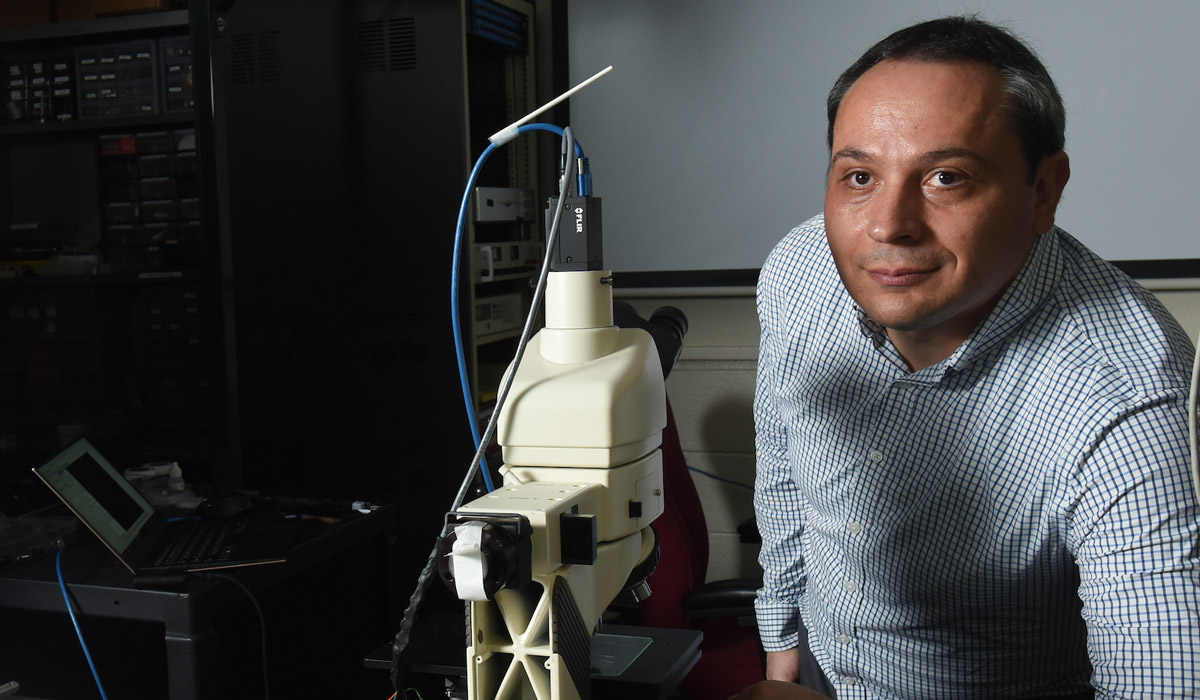

George Nehmetallah, an assistant professor of electrical engineering and computer science, has always loved to learn. As a boy growing up in Lebanon, he enjoyed figuring out how the pieces of nature work together.
“I used to watch all science movies,” he said. “Any science-related documentary or science fiction.”
Unsurprisingly, given his interests, Nehmetallah felt drawn to engineering. After earning his bachelor’s and master’s degrees in Lebanon, he moved across the world to pursue his doctorate in electrical engineering at the University of Dayton in Ohio.
Nehmetallah became especially interested in optical engineering, a field of study focused on designing optical instruments utilizing the properties of light. Eventually, he attended a conference on holography, a 3-D imaging technique. The conference inspired him to begin working on imaging research for the U.S. Army, for which he was honored with an Army Achievement Award in 2011. Nehmetallah wrote a book, Analog and Digital Holography with MATLAB. Throughout his career, he has published more than 120 peer-reviewed journal publications and conference proceedings.
Since joining Catholic University’s engineering faculty in 2013, Nehmetallah has continued his research in 3-D imaging, digital holography, and metamaterials. In a project drawing on biomedical engineering, he is working to capture 3-D images of various kinds of cancer cells, with the goal of understanding these cells in a new way and developing a cure.
In another project, Nehmetallah and his graduate student Thanh Nguyen hope to develop a method of reconstructing video sequences of dynamic live cells captured using a computational microscopy technique called Fourier ptychographic microscopy (FPM).
Having the opportunity to work on such a wide range of projects is a thrill for Nehmetallah, who still enjoys the challenge of figuring out how the world works. For his efforts, he was recognized with the University’s 2018 Young Faculty Scholar’s Award.